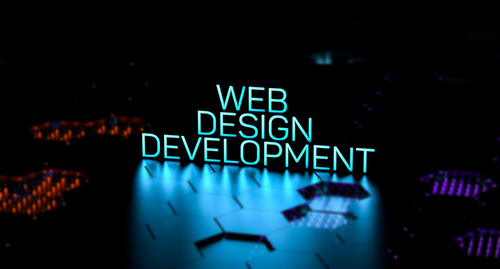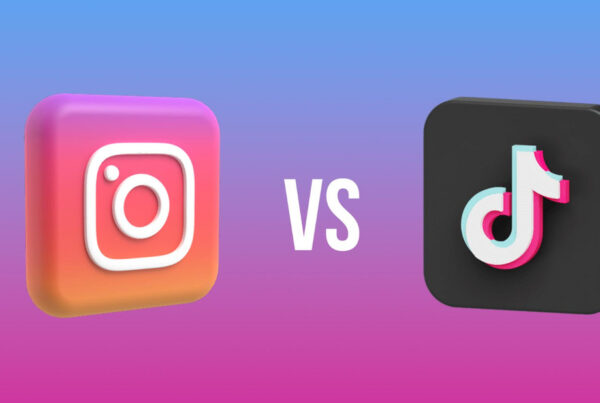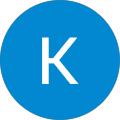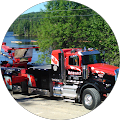The world of web design trends is constantly evolving, with new techniques and innovations shaping how businesses create their online presence. Not every design trend proves its ability to endure through time. The advancement of technology makes what was previously innovative obsolete, resulting in substandard user experiences and reduced search engine rankings.
In 2025, businesses must focus on modern web design trends, prioritizing usability, speed, and engagement. Ignoring the evolution of web design trends over the years can leave your website looking obsolete and ineffective. Your website must avoid past mistakes to remain relevant while delivering optimal user experiences. Let’s explore some outdated web design trends that need to be left behind in favour of the best web design trends in 2025.
Overuse of Stock Images and Generic Graphics
A website needs strong visual appeal, yet excessive use of stock photos makes brands appear impersonal to users. The year 2025 marks a shift in business direction toward custom visuals that represent their individual brand identity. Stock images fail to deliver an authentic look, which leads to decreased trust and reduced engagement from users.
Today’s users seek premium original content that connects with their personal interests. AI-generated visuals, personalized photography, and branded illustrations are becoming integral parts ofnew web design trends. Businesses should spend resources on custom graphic development that matches their brand identity.
Auto-Playing Videos and Music
While video content remains an important part of thelatest web design trends, forcing users to watch a video or listen to music automatically can be frustrating. The practice of automatic media playback creates multiple problems by disrupting user experience, slowing down page loading, and causing visitors to leave websites prematurely.
Users primarily access websites through mobile devices in public areas where background noises can create distractions. Businesses should offer users the option to decide whether to experience multimedia content instead of implementing automatic video or music playback.
Cluttered and Overly Complex Layouts
One of the key elements of the 2025 web design trends is simplicity. Websites that contain too much text, multiple fonts, and disorganized layouts fail to capture user attention because they become confusing. Users demand interfaces with simple navigation systems that lead them directly to the information they need.
A disorganized website design structure leads to lower search engine rankings. A user-friendly website design that combines structure and visual appeal receives higher priority from Google, leading to better SEO performance.
Because of a straightforward layout structure, your website visitors will easily navigate through your content while staying engaged.
Over-reliance on Trendy Aesthetics Without Functionality

Businesses commonly make the mistake of choosing design looks over functional usability. The visual appeal should enhance functionality rather than compromise it because first impressions must serve both purposes. Users become frustrated when websites use flashy animations, unconventional navigation, and over-the-top typography instead of engaging them.
Brutalist and abstract design trends represent a prime example of this mistake because their artistic appearance leads to visitor confusion, which results in decreased conversions. Users become frustrated when they navigate ultra-minimalist websites which eliminate fundamental navigation features.
The best web design trends in 2025 focus on user experience first. The user experience depends on three key elements: easy navigation, accessible content, and quick page loading times. Businesses should avoid adopting mindless visual trends by creating designs that harmoniously unite aesthetics and functionality.
Infinite Scrolling Without Purpose
Infinite scrolling gained popularity as a social media design feature during a previous era. The absence of a strategic plan when using this technique results in user frustration. Users find it more convenient to navigate content when page sections are defined or when pagination provides straightforward navigation.
Current web design trendsaim to enhance user experience, not complicate it. Website scrolling methods need to match the nature of their content. E-commerce websites should not use infinite scrolling since this design hinders users from locating particular products. A well-structured navigation system with appropriate filtering features enhances accessibility and usability.
Excessive Pop-Ups and Intrusive Ads
Strategic implementation of pop-ups works as an effective marketing tool, yet repeated or improper pop-up displays negatively affect user experience. Website visitors abandon pages when they encounter intrusive advertisements immediately after page load.
Aggressive website pop-up elements lead to search engine penalties that affect website rankings. Latest trends in web design suggest using non-intrusive methods, such as exit-intent pop-ups or strategically placed banners, to enhance user engagement without overwhelming visitors.
Slow Loading Speeds Due to Heavy Elements
Speed is a crucial factor in website design and can significantly impact user retention and SEO rankings. Websites that require extended loading times will find it difficult to maintain visitor interest. According to Google “53% of visits are abandoned if a mobile site takes longer than 3 seconds to load.”
Large, unoptimized images, excessive animations, and unnecessary scripts are the main causes of slow page speeds.
To stay aligned withmodern web design trends, businesses should optimize performance by compressing images, reducing HTTP requests, and utilizing caching techniques. Websites that load quickly create satisfied users who are more likely to convert into customers.
Reliance on Obsolete Technologies

The speed of technological advancement makes websites built with outdated frameworks, unsupported CMS platforms, and deprecated plugins struggle to maintain their relevance. The use of outdated tools creates both performance problems and security threats.
Websites that depend on outdated CMS versions, which no longer receive updates, become exposed to cyberattacks. Modern browsers may experience compatibility problems using outdated JavaScript libraries and legacy plugins. Businesses should avoid outdated technology by investing in contemporary web design trendsthat focus on security, scalability, and performance. Implementing modern frameworks such as React, Next.js, or a headless CMS substantially improves website speed and functionality.
Failing to Offer Adaptive UI Preferences
User experience now requires unique solutions for each user. The latest web design trends emphasize customization, allowing users to adjust UI settings to their preferences. The shift includes dark mode as one element but also includes adjustable font sizes, high-contrast modes, and additional accessibility-friendly options.
Your flexible user interface enables users to access content through methods that match their personal preferences. The need for digital accessibility compliance becomes more critical because new regulations are being established. Websites without adaptive design features risk losing visitors who quickly leave the site and become less engaged.
Neglecting Web Accessibility Standards
Businesses that fail to consider accessibility in 2025 will face one of the most severe mistakes possible. Web design should be inclusive because it should allow users with disabilities to access and use website content easily. The three main accessibility problems include poor contrast levels, missing keyboard navigation, and image alt text.
WCAG (Web Content Accessibility Guidelines) has become mandatory for all websites instead of remaining optional. Search engines give websites higher priority for accessibility, which means accessibility improvements directly support SEO objectives. A website that has been properly optimized must serve all users by providing equal access to its information and services.
Generic Call-to-Action (CTA) Buttons
A website achieves success through its ability to lead users toward performing desired actions. CTAs that use generic phrases like “Click Here” or “Learn More” do not generate urgency or engagement from users. Users require straightforward, compelling directions that provide them with specific information about the expected outcomes of their actions.
Modern web design trends focus on personalized, action-driven CTAs. CTAs should contain persuasive statements that match user intentions, such as “Get Your Free Consultation” or “Start Your Trial Today.” Creating well-designed CTAs leads to higher conversion rates and meaningful audience engagement.
Forgetting Search-First Web Design

A website that looks beautiful serves no purpose when users cannot find it. Businesses continue to value design appearance more than search engine optimization, which results in poor search rankings and decreased website traffic. Partnering with an experienced SEO company in Toronto, such as Mediaforce, can help ensure that your site is both visually appealing and search-engine friendly.
Search-first web design represents a modern philosophy that bases all design choices on SEO principles. This includes:
- Better search engine rankings result from page speed optimization.
- A proper content structure with headings and schema markup helps users understand information better.
- The website needs better internal linking to create smooth navigation paths.
- Google requires mobile-friendly design implementation for its mobile-first indexing system.
A web design agency in Toronto like Mediaforce integrates SEO into the development process, ensuring that every aspect of a website—from UI to backend architecture—is designed to rank well in search results.
Overlooking AI and Personalization
Artificial intelligence transforms website interactions with their visitors through revolutionary methods. Organizations not implementing AI-based personalization features will experience lower performance than their personalized competitor businesses.
Best web design trends now include AI-powered chatbots, dynamic content recommendations, and smart user journeys that adapt to individual preferences. Customized experiences lead to higher visitor engagement while decreasing website abandonment and creating happier customers. Through AI technology implementation, companies deliver smooth, user-friendly platforms that maintain visitor loyalty.
Conclusion
Businesses must adopt modern web design patterns by discarding obsolete design methods by 2025. Websites that focus on delivering smooth user experiences, fast performance, and full accessibility will always defeat sites that maintain outdated design principles.
Your website’s competitiveness in the evolving digital landscape depends on your avoidance of these outdated web design trends.
If you need web development in Toronto, contact us. Working with Mediaforce will help your business lead the market by implementing modern design approaches that improve visual appeal and operational efficiency. Your business can develop an interactive website with high performance that attracts and keeps users through modern web design trends.













































































